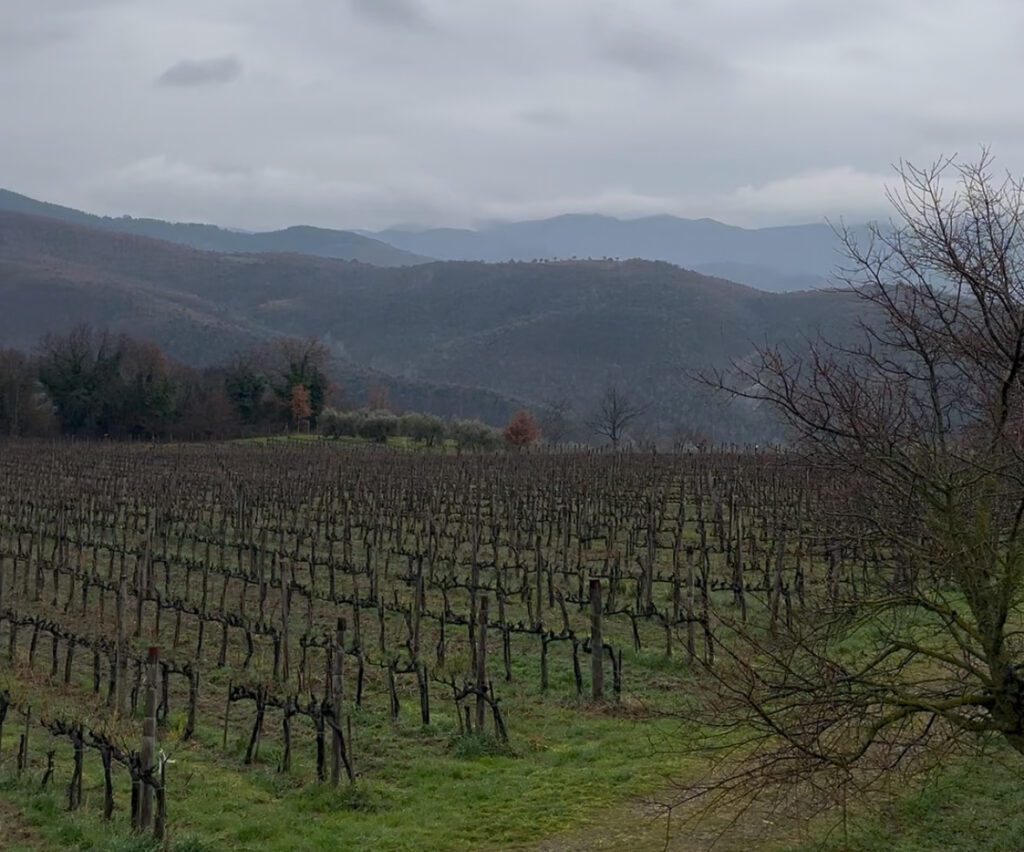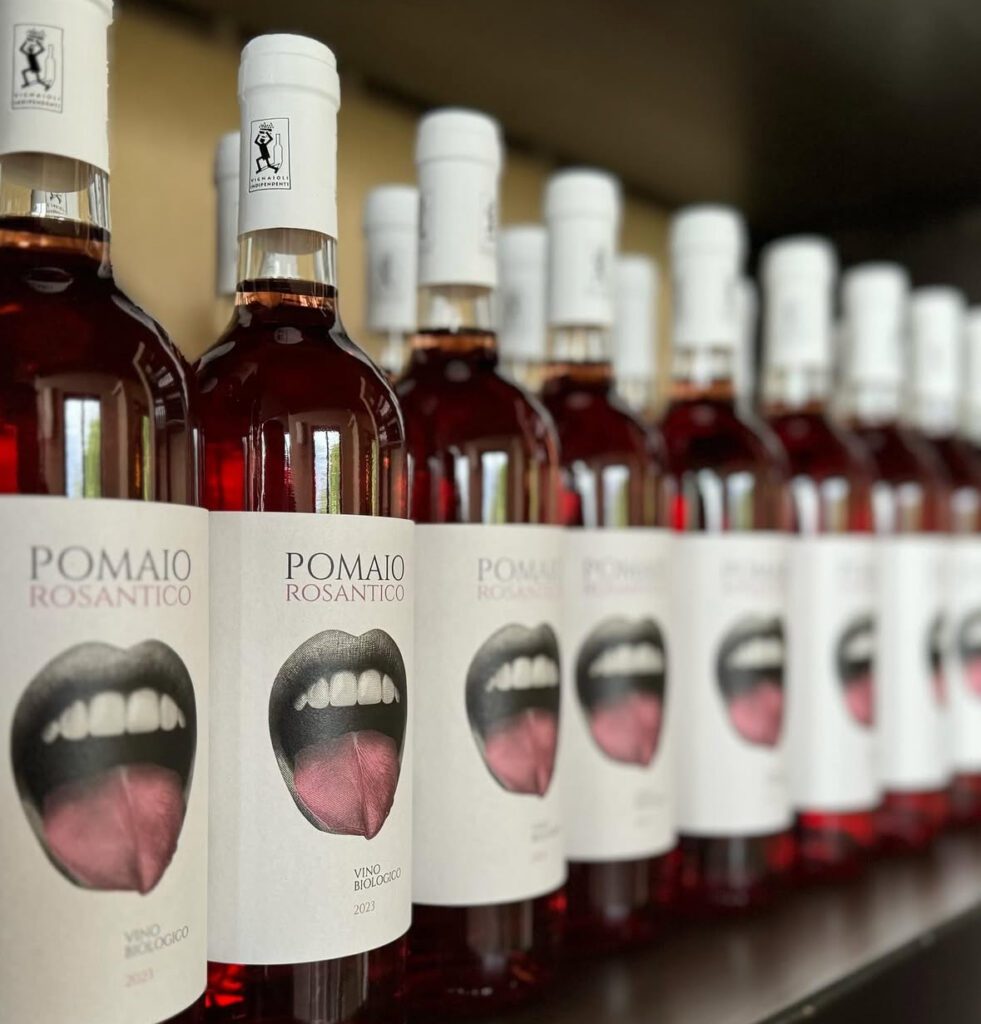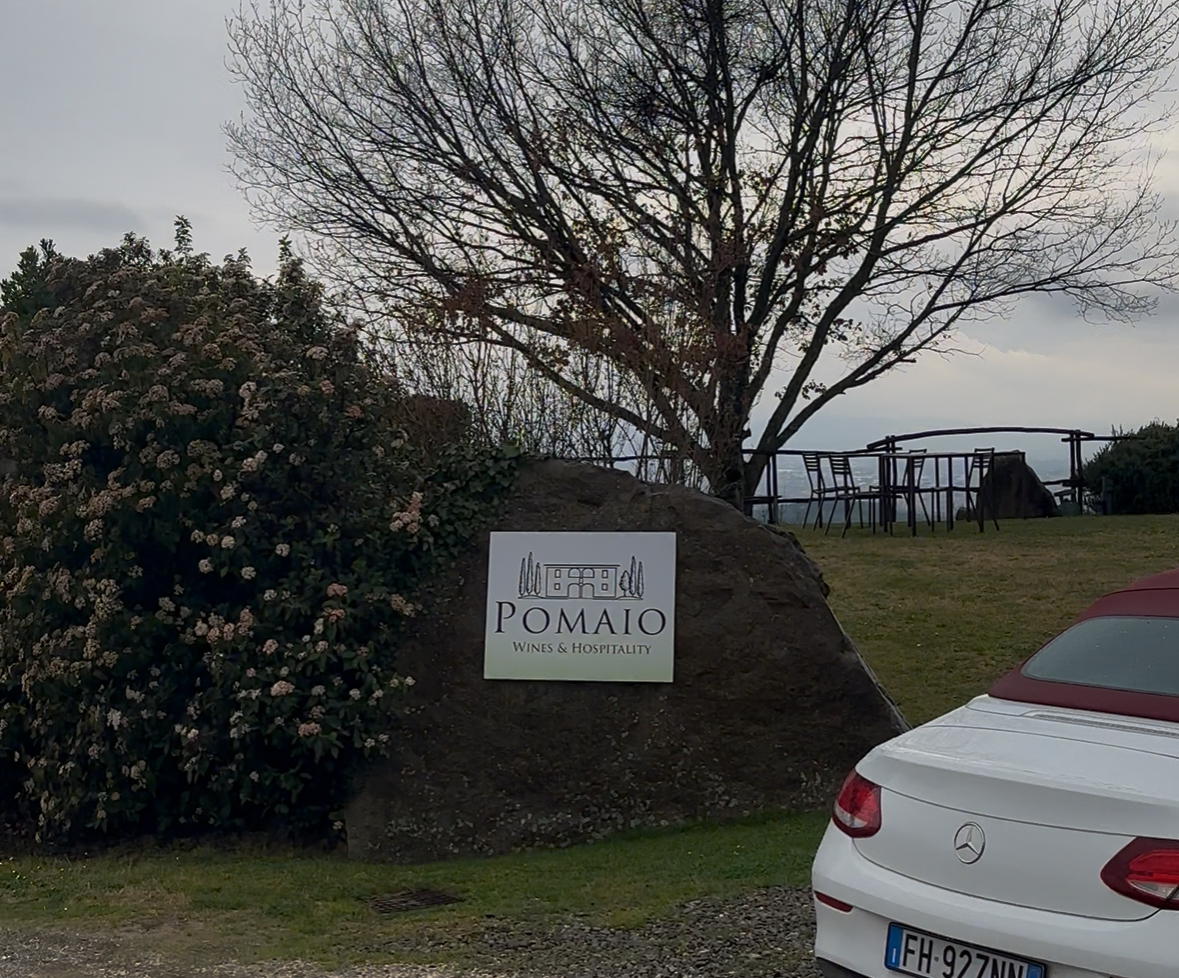On a cloudy day in late February, I piled into a van with the other students in Innovators in Journalism and we drove up a mountain to our first site visit interview location. As our van climbed higher into the mist, the winding mountain road gave way to the breathtaking view of Pomaio Winery. Leonardo Bihal greeted us at the top holding an umbrella, which he generously pawned off to one of us while he gave us an outdoor tour of the winery. You’d think that the rain clouds might ruin the view, but let it be known that the views from the top of the mountain were nothing short of stunning.

Bihal proved to be an exceptional host and tour guide, which makes sense given that he mentioned to us that hospitality is a major part of Pomaio’s business and how they stay profitable. He guided us through the winery’s underground storage, where their wines age to perfection, and even offered us a taste of their signature rosé straight from the barrel. Once back above ground, we were treated to fresh bread straight from the oven drizzled with Pomaio’s own small-batch olive oil. And after all of that, he still generously took the time to answer our questions. Now that’s a host.
During this interview, I got to ask Bihal questions about something every innovator faces at some point: failure. Specifically, I asked him if there had “…been any innovations you attempted that ultimately failed, and what did you learn?”
Bihal: “Yes. I’ll give you one example: I tried a new label for a type of wine we have here, and some people loved it and some people hated it. Of course, we try to reach as many people as we can, but sometimes you cannot please everybody.”
I pressed him for more information about this mystery label, asking, “Whatever happened to that label? Is it still here? Did you change it?” And this, dear reader, is where I found the true innovator in Bihal.
Bihal: “No, no, I still have the label. Basically, we tried to make the wine for young people. So for that wine, we’re going to try something more fun. A lot of people start to drink wine when they’re young.”
Bihal, like any good business owner, recognized a shift in consumer habits. Young people today aren’t drinking wine the way older generations have in the past. To keep Pomaio relevant and thriving for generations to come, he saw the need to innovate, even in something as seemingly minor as a label. The goal was to make wine feel more accessible, more fun and exciting if you will, for a younger demographic, rather than something reserved for special occasions or your grandparent’s collection you aren’t supposed to touch.
Bihal: “There’s a crisis in the wine business, and it started a couple years ago for the first time in 30 years. Some studies revealed that young people are not drinking wine. And that’s something we really want to bring new people and young people into: the wine world. And to do that, everything matters. The label and the product. So make a fun label, an interesting label that brings you in. And once you’re in, you taste the product and you like it.”
I think Bihal’s approach to innovation is a lesson of adaptability. He understands that in order to sustain a business, winery or otherwise, you have to pay attention to the shifting trends in your market and then be willing to take risks. A wine bottle label might seem like a small detail, but in an era like today where branding and marketing play a massive role in consumer choices, it’s a crucial factor in attracting new people to, as Bihal calls it, “the wine world.”
Innovation isn’t always going to be about a radical change. Sometimes it can be as simple as changing the way you present something to the world to pique the interest of new audiences. By adding a touch of modernity to the wine bottle label, Bihal is ensuring that Pomaio continues to evolve with the changing times and doesn’t get left behind. And isn’t that what innovation is all about?
In the winery business and beyond, the willingness to take risks and adapt with your market is what really sets true innovators apart from the rest. Bihal isn’t simply keeping up with his market, he’s getting ahead of the curve.



Leave a Reply